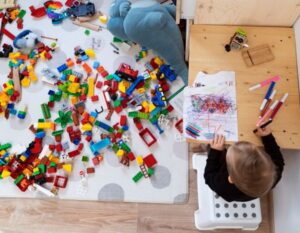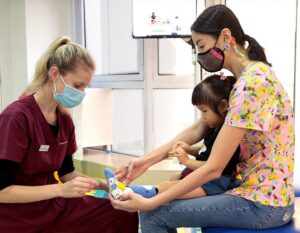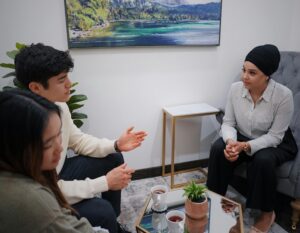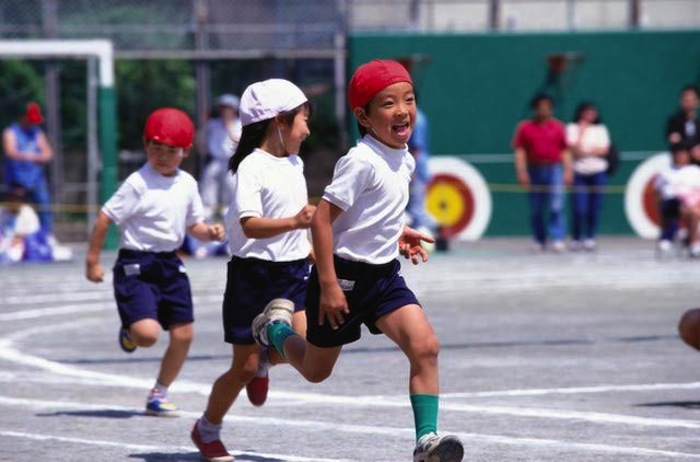
We’ve all heard about growing pains in children, but what exactly causes them and how can they be treated?
When I first heard the term growing pains, I thought it was just something angry parents would say to other angry parents to describe the frustration of raising their little ones. I never thought much about the name until I started my studies in health sciences. I soon realized that growing pains was in fact the name of a common medical condition affecting many children.
Typically, the child will wake up at night complaining of soreness and discomfort in their legs. The pain then mysteriously vanishes by morning. The parent is left bewildered and distressed, not know whether the pain is a sign of a more serious underlying problem. First of all, parents can breathe a sigh of relief. True growing pains are not a dangerous medical condition and resolve on their own with time. It has been estimated that growing pains affect between 25%-40% of all children. There are two age groups that seem to have a higher incidence of occurrence, those ages 3-5, and 8-12 year olds. Almost all cases conclude by the age of 14. Because they can often be confused with other more serious health problems, it is important to have a clear idea of what they are and are not.
The funny thing about growing pains is that they have nothing to do with growing! Initially it was hypothesized that these pains were a result of rapid bone development and lengthening during a child’s growth spurts. Since most growth spurts occur during puberty (which falls outside the affected age groups), physicians had to abandon this theory.
Signs and Symptoms
So how do you know if your little one is suffering from this unusual ailment? Besides the age categories mentioned previously, there are other distinguishing features to be aware of. Most flare-ups occur in the late afternoon or at night. Growing pains only target the muscles of the legs and not the joints. The muscles generally affected are the front thighs, calves and those in the back of the knees. The pain is described as an achy, cramping sensation. Sharp, jolting pain is rare. It is important to note that it affects both legs. This doesn’t mean that both legs are required to be painful with each episode, but if the child only ever experiences one-side leg pain, then another diagnosis must be considered. There should be no visible signs at the site of discomfort. If swelling, redness or bruising is seen, the child should seek medical attention immediately to rule out an infection or other serious condition. Most kids that are diagnosed experience only a few incidents per year. However, there are a few unlucky ones that deal with them on a nightly basis.
What’s the Cause?
In short, doctors do not know, but there are several theories proposed that are backed by modest research. The most common theory is that growing pains are due to excessive physical activity such as running, jumping and climbing. The result is that muscles experience microtrauma from overuse and the effects are felt later on that night.
Another theory is that children suffering from growing pains have a lower pain tolerance than the rest of the population. A 2004 study involved applying physical pressure to various body points in two groups of children, one suffering from growing pains and the other that didn’t. The researchers found that within the growing pains group, the level of pressure required to elicit discomfort was much lower than the other group. Lastly, there are doctors that believe that growing pains are due to anatomical differences. Children who are “double-jointed” are at an elevated risk for growing pains. In actuality there is no such thing as being “double-jointed”, the term simply means that the child has hypermobility/extreme flexibility in their joints. The reasoning is that hypermobile joints lack stability which could transfer excessive stress to the attached musculature causing pain. There have also been studies showing a correlation between flat feet and growing pains. Children with growing pains and flat feet were given a supportive orthotic insert to wear in their shoes which reduced the severity and frequency of flare-ups.
What Can I Do To Help My Child?
It’s extremely tough for parents to watch their children in distress. Is there anything that can be done? Thankfully, the answer is yes. There have been studies conducted that show a regular stretching regimen can help to reduce the frequency of attacks. A Canadian study conducted at the Children’s Hospital of Eastern Ontario revealed that children engaging in a 10-minute stretching program twice a day focusing on the quadriceps, hamstrings and calves had zero incidents of growing pains after nine months. In the same study, children that relied only on leg massages and pain medication were still suffering occasional bouts of pain at the end of nine months.
In general, most medical practitioners agree that there are a few things that parents can do for their children:
- Daily stretching of the hamstrings, quadriceps and calf muscles. 10 minutes in the morning and 10 minutes at night, before bed.
- Engage in a variety of different sports and activities to engage different muscle groups as opposed to overworking the same sets of muscles repeatedly.
- During physical activity, it is important to have periodic rest breaks to hydrate and avoid overexertion.
- Gentle massaging of all the muscles in both legs.
- A warm bath before bed to help soothe achy muscles.
- An orthotic shoe insert if the child has flat feet/overpronation issues.
- Over the counter acetaminophen or ibuprofen may help with the pain. Be sure to check with your doctor first. Avoid aspirin as it can cause a life-threatening condition called Reye’s Syndrome.
When To See Your Pediatrician
If any of the following symptoms or conditions are observed, a visit to the pediatrician should follow immediately:
- If the pain is sharp and severe or there is increasing swelling despite rest, icing, compression and elevation of the legs
- Fever
- Balance issues or walking with an observable limp
- Urine that is extremely dark, post-exercise
- Increasing warmth and reddening of the skin over the affected muscle
Hopefully with these tips we’ve eased a bit of pain for both you and your child!






 View All
View All





 View All
View All










 View All
View All







![[𝗛𝗢𝗧 𝗡𝗘𝗪𝗦] 𝗦𝗲𝗻𝗴𝗸𝗮𝗻𝗴 𝗦𝘄𝗶𝗺𝗺𝗶𝗻𝗴 𝗖𝗼𝗺𝗽𝗹𝗲𝘅 𝗶𝘀 𝗕𝗔𝗖𝗞 𝘄𝗶𝘁𝗵 𝗡𝗘𝗪 𝗦𝗟𝗜𝗗𝗘𝗦 & 𝗙𝗘𝗔𝗧𝗨𝗥𝗘𝗦! 💦🔥
One of the most popular pools in the North-East is finally back and it’s even better than before! Brand-new slides for thrill-seekers (1.2m+), splash zones for little ones, a Jacuzzi, sheltered teaching pool, and an Olympic-sized pool for serious swimmers.
Say goodbye to the rainbow slides as the new ones are faster, wider & way more fun! Just remember: proper swimwear only, and no accessories for max sliding speed.
𝗪𝗵𝗲𝗿𝗲: 57 Anchorvale Rd, Singapore 544964 (5 mins from Sengkang LRT)
𝗪𝗵𝗲𝗻: Tues/Thurs/Sat: 6.30am – 9.30pm | Wed/Fri/Sun: 8am – 9.30pm | Mon: Closed
𝗛𝗼𝘄 𝗺𝘂𝗰𝗵: Family of 4 (weekend) = Just $7!
Tag your splash squad & get ready for a wave of fun! 🏄♂️
.
.
.
.
.
.
.
#SengkangSwimmingComplex #SGPools #FamilyFunSG #WaterPlaySG #NorthEastLiving #SengkangReopens #KidsActivitiesSG #SengkangFun #publicswimmingpool](https://www.sassymamasg.com/wp-content/plugins/instagram-feed/img/placeholder.png)
